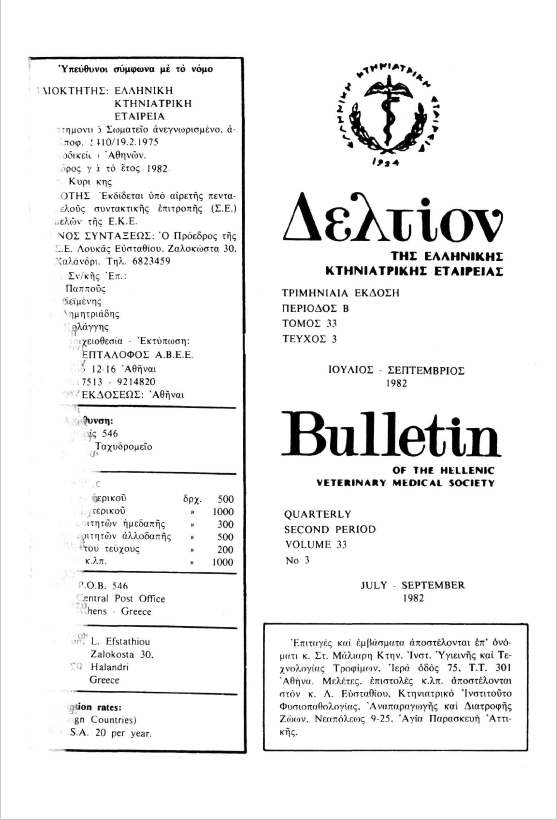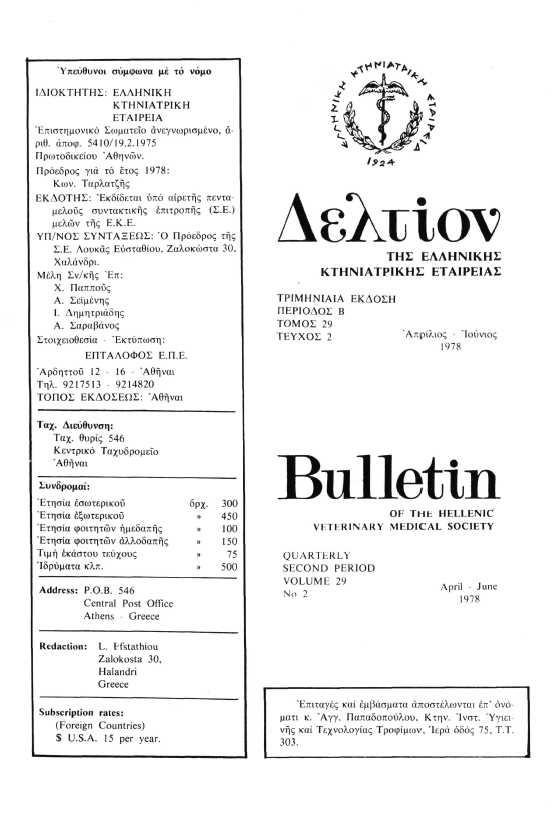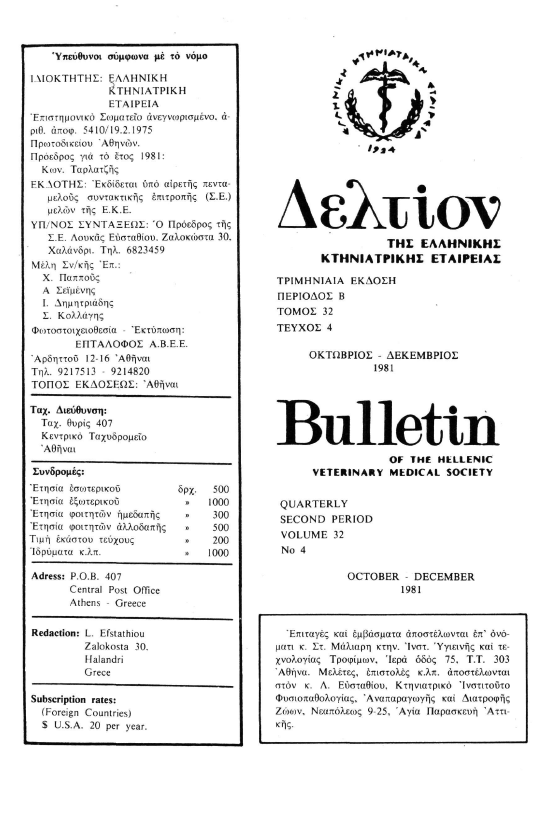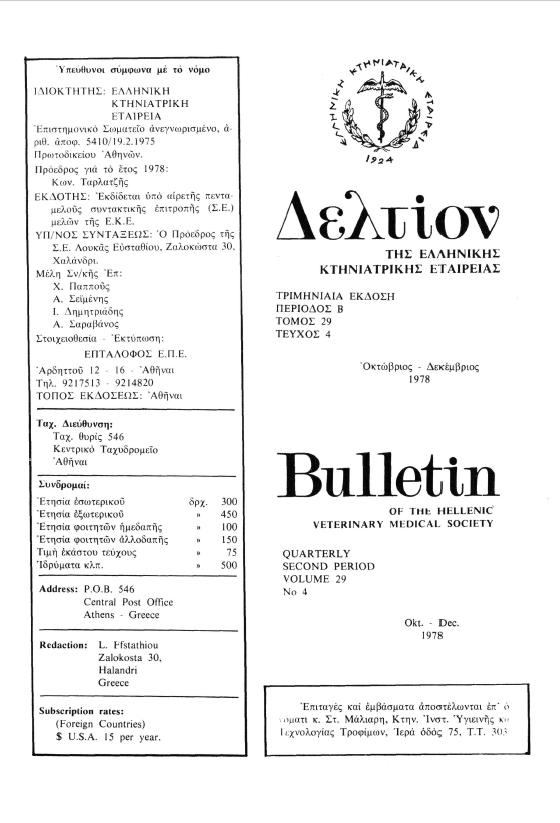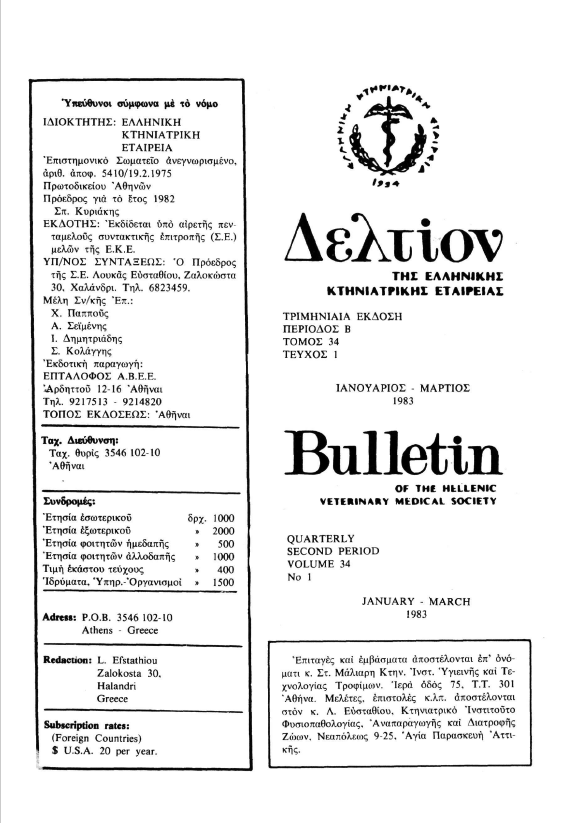In field evaluation of injectable appramycin for the control of naturally occuring colibacillosis in young calves
Abstract
The efficacy of apramycin at 20mg/kg of body weight IM for 5 days was evaluated for the control of naturally oecuring colibacillosis in young calves (n,=20). Positive control calves (n ,=20) were treated with trimethoprim sulphadiazine and when symptoms persisted or recurred with Oxytetracycline and/or chloramphenicol IM at dosages and for periods recommented by the manufacturers. Scored clinical observations and diarrhoea were generally comparable between the two treatment groups. Due to persistence or recurence of diarrhoea, positive control calves required a total of 160 IM injections as compared to 100 IM injections for apramycin group. The average daily gain of the apramycin calves was greater, although not significant (P 0.05), for the periods 0-7 days and 7-14 days by 123.33% and 23.51% respectively. The overall improvement (0-14 days) was statistically significant (Ρ 0.05) amounting to 44.6% over the controls. Mean serum immunoglobulin levels did not differ significantly (P 0.05) between the two treatment groups. From fecal swabs taken from all calves on trial days 0 and 5, E. colt was isolated and 9 strains were recognised enteropathogenic belonging to 4 serotypes.
Article Details
- How to Cite
-
ΚΥΡΙΑΚΗΣ Σ., ΣΑΡΡΗΣ Κ., ΑΝΔΡΕΩΤΗΣ Ι., & ΤΣΑΛΤΑΣ Κ. (2019). In field evaluation of injectable appramycin for the control of naturally occuring colibacillosis in young calves. Journal of the Hellenic Veterinary Medical Society, 33(2), 152–158. https://doi.org/10.12681/jhvms.21537
- Issue
- Vol. 33 No. 2 (1982)
- Section
- Articles

This work is licensed under a Creative Commons Attribution-NonCommercial 4.0 International License.
Authors who publish with this journal agree to the following terms:
· Authors retain copyright and grant the journal right of first publication with the work simultaneously licensed under a Creative Commons Attribution Non-Commercial License that allows others to share the work with an acknowledgement of the work's authorship and initial publication in this journal.
· Authors are able to enter into separate, additional contractual arrangements for the non-exclusive distribution of the journal's published version of the work (e.g. post it to an institutional repository or publish it in a book), with an acknowledgement of its initial publication in this journal.
· Authors are permitted and encouraged to post their work online (preferably in institutional repositories or on their website) prior to and during the submission process, as it can lead to productive exchanges, as well as earlier and greater citation of published work.




